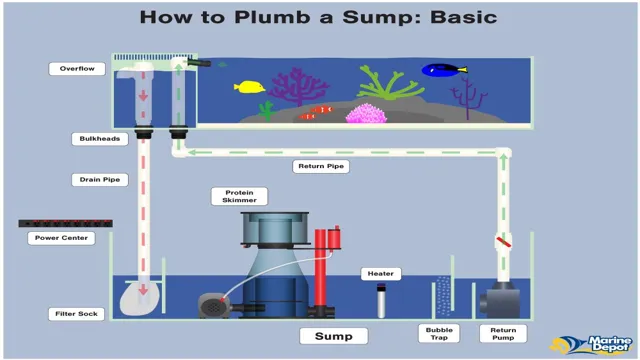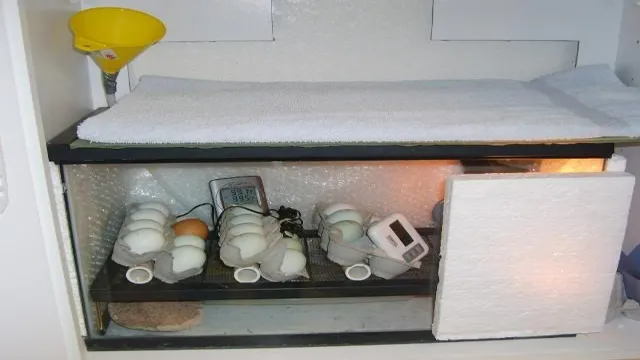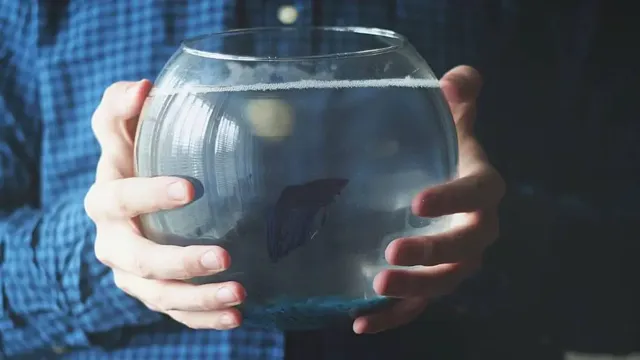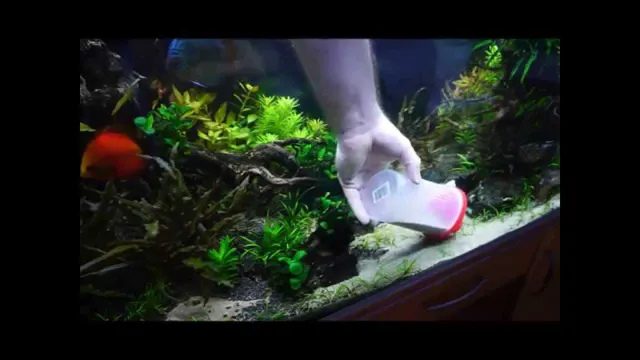If you’re new to the world of marine aquariums, you may be wondering how to properly filter the tank to ensure the health and well-being of your aquatic inhabitants. The process of filtering a marine aquarium may seem daunting at first, but with a little bit of knowledge and some helpful tips, you’ll be able to keep your tank clean and clear in no time. First and foremost, it’s important to understand why filtration is necessary in a marine aquarium.
Fish waste, uneaten food, and other debris can quickly build up in the tank and create harmful levels of ammonia and nitrite. A good filtration system helps to remove these harmful substances and keep the water clean and clear. One common type of filtration system used in marine aquariums is a protein skimmer, which helps to remove organic matter from the water before it has a chance to break down and create harmful compounds.
Another important component of a filtration system is the mechanical filter, which physically removes debris and particles from the water. When choosing a filtration system for your marine aquarium, it’s important to consider the size of your tank and the types of fish and other creatures you’ll be keeping. A good rule of thumb is to choose a system that can filter at least five times the volume of your tank per hour.
By taking the time to learn about different types of filtration systems and choosing the right one for your tank, you can ensure the health and longevity of your marine aquarium. With a little bit of care and attention, your underwater world will thrive for years to come.
Understanding the Importance of Filtration
When it comes to setting up and maintaining a marine aquarium, filtration is an essential component that should not be overlooked. Proper filtration is crucial for maintaining a healthy and thriving aquatic environment for your marine pets. One way to filter a marine aquarium is by using a combination of biological, mechanical, and chemical filtration methods.
Biological filtration involves the use of live bacteria to break down waste and convert harmful toxins into less harmful substances. Mechanical filtration involves physically removing dirt, debris, and uneaten food from the water, which is accomplished by using a filter media such as a sponge, a filter floss or a protein skimmer. Chemical filtration involves the use of chemical substances, such as activated carbon, to remove impurities and toxins from the water.
By implementing a robust filtration system that includes all three of these methods, you can ensure that your marine aquarium remains clean and healthy, providing a safe and comfortable home for your marine pets.
The Role of Filtration in a Marine Aquarium
Filtration plays a crucial role in maintaining the health and wellbeing of marine animals living in an aquarium. The aquarium environment is a closed system, and organic waste products tend to accumulate over time, leading to high levels of nitrogenous compounds. Without proper filtration, these compounds can be toxic to marine animals and can cause stress or even death.
Filtration helps to remove excess waste, debris, and uneaten food, as well as to release oxygenated water and maintain a healthy oxygen level in the aquarium. Therefore, choosing the right type of filter for your marine aquarium is essential to keeping your marine life happy and healthy. From mechanical filters to biological filters, there are various options to consider.
It is necessary to maintain and clean the filter regularly to keep it at maximum efficiency. In summary, proper filtration plays a vital role in keeping your marine aquarium’s water healthy, ensuring that your marine animals thrive and flourish.

Types of Filtration Systems for a Marine Aquarium
Filtration is an integral part of maintaining a healthy marine aquarium. It plays a crucial role in keeping the water clean and clear, which is essential for the wellbeing of the fish and corals. There are different types of filtration systems available for marine aquariums, each with its unique benefits.
One such system is mechanical filtration, which involves removing solid particles from the water by straining it through a filter media. Another essential filtration system is biological filtration, which uses beneficial bacteria to break down harmful waste products into less harmful forms. Chemical filtration involves the use of activated carbon to absorb and remove impurities from the water.
It’s important to understand that each filtration system has a specific purpose, and an ideal filtration setup might require a combination of these systems. A well-maintained filtration system not only promotes healthier marine life but also makes it easier to maintain the aquarium. (See Also: How to Lower Phosphates in Aquarium: 7 Effective Strategies to Control Algae Growth)
Choosing the Right Filtration System for Your Marine Aquarium
When it comes to setting up and maintaining a marine aquarium, choosing the right filtration system is crucial to the health and longevity of your fish and other aquatic inhabitants. Filtration helps to remove waste and debris from the water, as well as provide necessary oxygenation and circulation. Without proper filtration, harmful chemicals and bacteria can build up in the water, leading to sickness and even death among your marine life.
There are several types of filtration systems to choose from, including mechanical filtration for removing physical debris, biological filtration for breaking down harmful substances, and chemical filtration for removing impurities. It’s important to consider the specific needs of your aquarium and its inhabitants when selecting a filtration system, as well as factors like ease of maintenance and cost. Ultimately, by investing in the right filtration system, you can ensure a healthy and thriving marine environment for your aquatic pets.
Setting up and Maintaining Your Filtration System
When it comes to setting up and maintaining your filtration system for your marine aquarium, there are a few key steps you need to follow. First, choose the right type of filter for your tank size and the type of marine life you have. This could include a protein skimmer, canister filter, or hang-on-back filter.
Next, make sure you properly install the filter and all necessary equipment, such as heaters and powerheads. It’s important to regularly clean and maintain your filter system, including replacing filter media and checking for any clogs or leaks. You can also consider using live rock or sand as part of your filtration system to help create a healthy and balanced ecosystem.
With the right filtration system in place, you can ensure that your marine aquarium thrives and your marine life stays healthy and happy.
Step-by-Step Guide to Setting up Your Filtration System
A filtration system in an aquarium is essential to maintaining a healthy environment for your aquatic pets. Setting up a filtration system can be tricky, but with our step-by-step guide, you’ll be able to get your system up and running in no time. The first step is to determine what type of filtration system you need for your aquarium.
This will depend on the size of your tank, the type and number of fish you have, and how much maintenance you’re willing to put in. Once you’ve chosen your filtration system, it’s time to set it up. Start by reading the instructions carefully and assembling the components.
Position your filter correctly in the tank and connect all of the hoses according to the manufacturer’s instructions. Finally, fill your tank with water, plug in the filter, and turn it on. It’s important to maintain your filtration system regularly by cleaning or changing the filter media and checking that all parts are working correctly.
With a well-maintained filtration system, you can enjoy a thriving and healthy aquarium for years to come!
Essential Maintenance Tips for Your Filtration System
Your filtration system is an essential component of your aquarium that ensures the water remains healthy for your fish to thrive in. Setting up and maintaining the filtration system is crucial for the system to perform its function successfully. When setting up the filtration system, you need to choose the right size that can handle the size of your aquarium, taking into account the number of fish and the type of fish in it.
Proper maintenance is vital for the filtration system to function efficiently. The maintenance routine includes regular cleaning of the filter media and cartridge, checking the pump system and ensuring proper water flow, and replacing any damaged or worn filters. It’s crucial to check your filtration system weekly to guarantee everything is working correctly and to make definite water quality is safe for your fish.
By following these tips, your filtration system can maintain your aquarium’s health, giving your fish a happy and healthy home.
Common Mistakes to Avoid
When it comes to setting up a marine aquarium, one of the most crucial aspects is choosing the right filtration system. While there are several options available in the market today, it’s essential to know the common mistakes to avoid. Firstly, don’t skimp on the filtration system. (See Also: How to Combat Fin Rot in Aquarium Coop: A Complete Guide for Healthy Fish)
It’s always better to invest in a reliable and efficient filtration system than to settle for a cheaper option. Secondly, ensure that the filter you choose is the right size for your aquarium. If it’s too small, it won’t be able to handle the waste load, and you’ll end up with dirty water.
On the other hand, if it’s too significant, it may cause too much turbulence and stress on the fish. Lastly, don’t forget to clean and maintain your filtration system regularly. A dirty filter can lead to poor water quality, which can be dangerous for your fish.
By avoiding these common mistakes and investing in a suitable filtration system, your marine aquarium will thrive, and your fish will be happy and healthy.
Overstocking Your Aquarium
Overstocking your aquarium can be a common mistake among new fish owners. It might seem tempting to fill up your tank with as many colorful fish as possible, but overstocking can cause problems for both the fish and the aquarium’s ecosystem. When too many fish are in a tank, they produce too much waste, which can lead to poor water quality and unhealthy living conditions.
It can also increase the risk of disease and aggression among the fish, leading to a shorter lifespan. To prevent overstocking, it’s essential to research the needs and recommended stocking levels for each species of fish before adding them to your aquarium. Aim to create a balanced and sustainable environment that promotes healthy fish and a thriving ecosystem, rather than overcrowding for the sake of aesthetics.
Remember that less is often more when it comes to keeping fish in an aquarium.
Neglecting to Clean Your Filtration System
One common mistake that people make with their aquariums is neglecting to clean their filtration system. Your filtration system is one of the most essential parts of your aquarium. It is responsible for cleaning the water and keeping your fish healthy.
If you don’t regularly clean your filtration system, it can become clogged with dirt, debris, and other gunk. A clogged filter won’t be able to do its job properly, and your aquarium water will become dirty, leading to an unhealthy environment for your fish. So, it’s crucial to clean your filtration system regularly to ensure that it functions efficiently.
By doing so, your fish will remain healthy, and your aquarium water will always be clean and clear. Remember, a little bit of maintenance goes a long way in keeping your aquarium happy and healthy!
Not Checking Water Parameters Regularly
If you are an aquarium owner, one of the common mistakes you must avoid is not checking your water parameters regularly. Water parameters such as pH, ammonia, nitrate, and nitrite, among others, are crucial to the overall health of your fish and aquatic plants. Without regular testing, you might not notice changes in the water quality that could potentially harm your aquatic life.
For instance, high levels of ammonia can cause fin rot and damage the gills of your fish. On the other hand, nitrite poisoning can cause lethargy and breathing difficulties. Therefore, it is crucial to check your water parameters weekly or fortnightly depending on the type of aquarium you have.
Maintaining a healthy aquarium is not just about feeding your fish and changing the water regularly; it is also about testing the water to ensure that its chemical balance remains optimal. (See Also: How to Add Sand to Your Aquarium for Better Water Quality: A Step-by-Step Guide)
Conclusion
Filtering your marine aquarium is like putting on a police uniform and patrolling the streets. Just like a cop needs a badge, gun, and training, your aquarium needs a proper filter, media, and maintenance to keep it healthy. Without a filter, your aquarium will turn into a lawless wasteland, with harmful toxins and waste running rampant.
So gear up and filter up, and your aquarium will thrive, just like a city with a responsible and efficient police force.”
FAQs
What are the common types of filtration systems used in marine aquariums?
The most common types of filtration systems used in marine aquariums include mechanical filters, biological filters, and chemical filters.
How often should I clean my marine aquarium filter?
It is recommended to clean your marine aquarium filter every four to six weeks, but this can vary depending on the type of filter and the size of your aquarium.
Can I use a protein skimmer as my only filtration method in a marine aquarium?
While a protein skimmer can remove organic waste from your aquarium water, it is not recommended to use it as your only filtration method. It is best to use a combination of filtration methods for optimal water quality.
How do I choose the right filter for my marine aquarium?
When choosing a filter for your marine aquarium, consider the size of your tank, the types of fish and coral you have, and your personal preferences. Consult with a professional for guidance if needed.
Should I have a separate filter for my refugium in my marine aquarium?
It is recommended to have a separate filter for your refugium in your marine aquarium. This allows for separate maintenance and filtration for the different areas of your aquarium.
Can I use tap water with my aquarium filter?
It is not recommended to use tap water with your aquarium filter, as it may contain harmful chemicals and impurities that can harm your fish and coral. Use filtered or distilled water instead.
How often should I replace the filter media in my marine aquarium filter?
The frequency of replacing filter media in your marine aquarium filter depends on the type of media and the manufacturer’s recommendations. Check regularly and replace as needed for optimal filtration.







